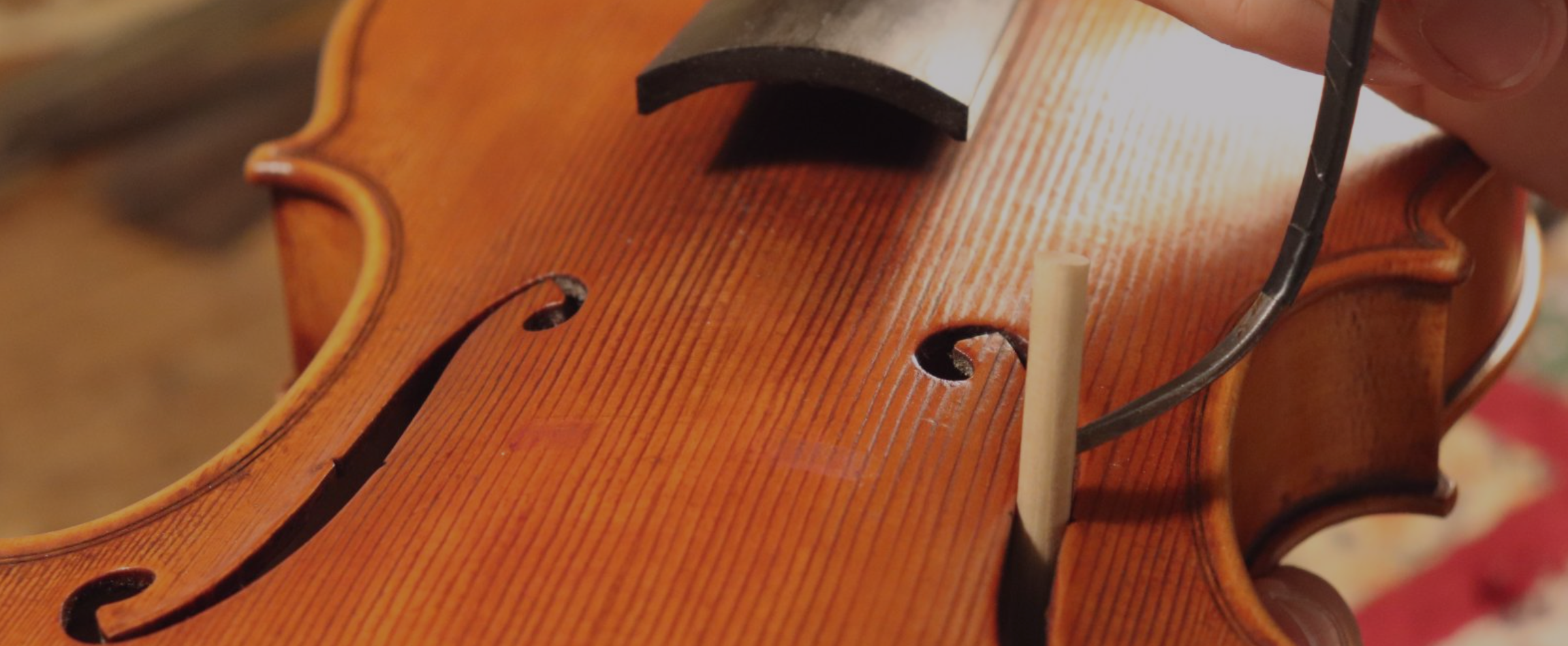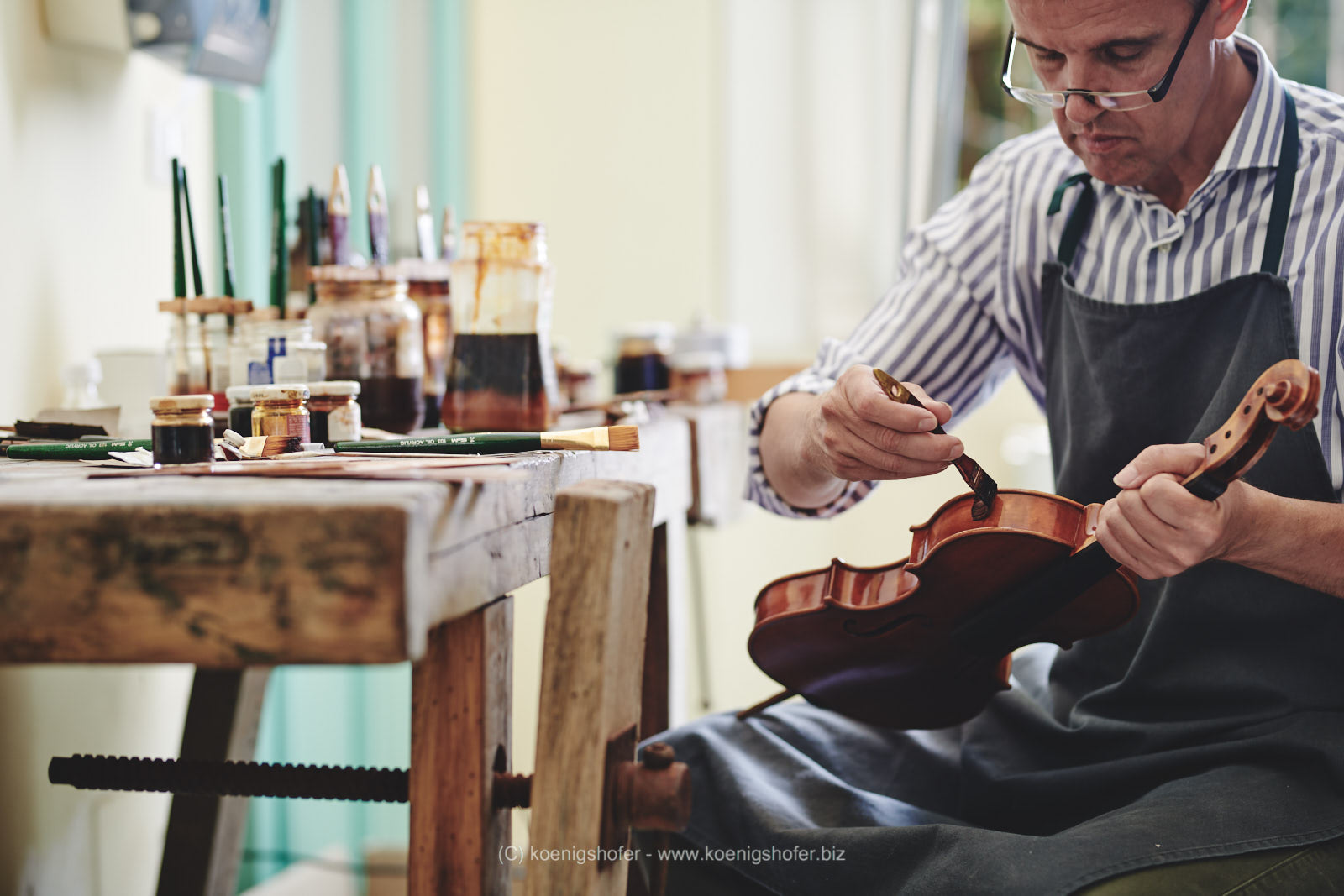
The perfect Soundpost position
Since I am often asked where the soundpost should be, here a short introduction regarding this crucial matter. Before we come to the position itself, I have to point out that the soundpost is actually not a single part which can make its duty all by itself.
The soundpost blocks in a certain point of view the treble side bridge foot on the top. In that way the bass side can move quicker up and down, around the treble soundpost side.
But if the soundpost is too close to the bridge foot the sound becomes too strong on the first and second string and if it is too far away it looses the core of the instrument sound.
So I hope that you can somehow imagine the sideways rolling or twisting vibration movement of the bridge. Of course a bridge moves actually in all sides.
It can be rather described as a stable point on a vibrating instrument. Its position determines an exact position where the bridge which has been solicited from the bow vibrates around that specific position.
The soundpost can only work properly when it is placed exactly symmetrical underside of the treble bridge foot on the same position as the bass bar on the other side of the instrument. So a clear concept to determine a center from which you can measure or construct your instrument is fundamental. Or you take it as it is and adjust the rest of your instrument in order that everything is perfectly lined up.
So again the bass bar is placed on the bass side of every instrument and the soundpost is placed on the treble side. Both are inside and it is quite difficult to see them from the outside. Maybe this increases its mystery and magic since you can’t see them very well from outside. Too bad that this last fact gives too much space to cover inaccuracy which makes actually the construction so time consuming.
The ideal bass bar distance from the outside of the bridge foot or the ideal soundpost distance from the outside of the bridge foot to the soundpost are exactly the same:
- for Violin I recommend 1,25mm as a good standard for everyone
- for Viola between 1,5 mm to 1,75mm
- for Cello 4mm
- for Bass 7mm
Now this measurement gives you actually only a line on which you can position your soundpost perfectly symmetric towards the bass bar.
So the soundpost position should be away from the bridge foot, towards the tailpiece exactly the measurement from the thickness of the top wood in that position.
I guess you are now quite surprised. But correct; it depends on the thickness of the instruments thicknesses.
If your top is very thick you might go backwards even 5mm and on some old instruments 2,5mm (like some original Stradivari or Guarneri)
Usually it is somehow about 3mm (even on Stradivari or Guarneri) Violinmakers have special tools to measure the thickness on a closed instrument. I use the Hacklinger thickness gauge. A quite sophisticated measuring tool which has been invented and produced by a Physic Professor of Munich, Germany, which uses magnets to measure very precise.
It is actually very difficult to give a clear recipe which works for everyone and by reading all above written of my self I have to admit that on every small detail I should ad some more, but I think it is better I leave it as it is in order to start discussion here on my blog, which I am looking forward to moderate here as soon as I can.
While you are contributing and waiting for my comment please take your time to watch the following videos which I made on my YouTube Channel:




1 comment
So how do you actually measure that?
Ralph McLin
Leave a comment
This site is protected by hCaptcha and the hCaptcha Privacy Policy and Terms of Service apply.